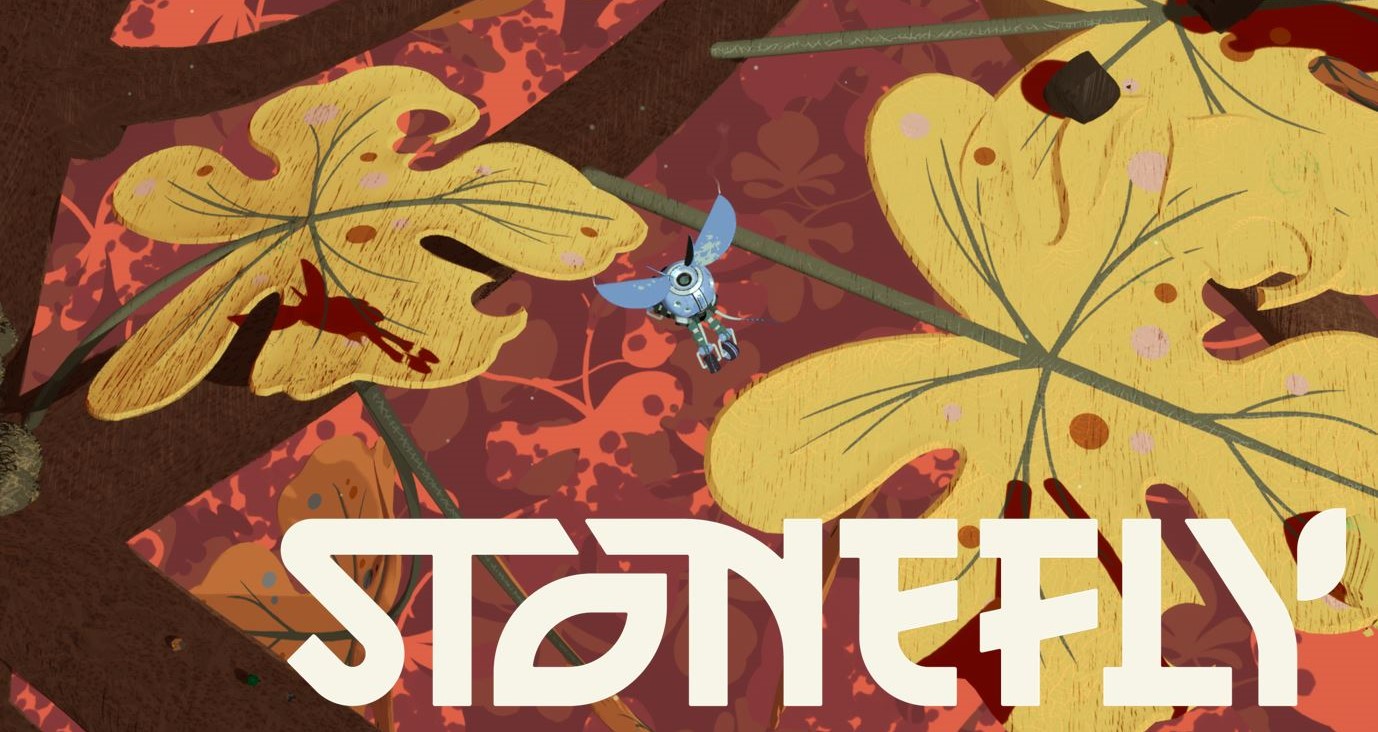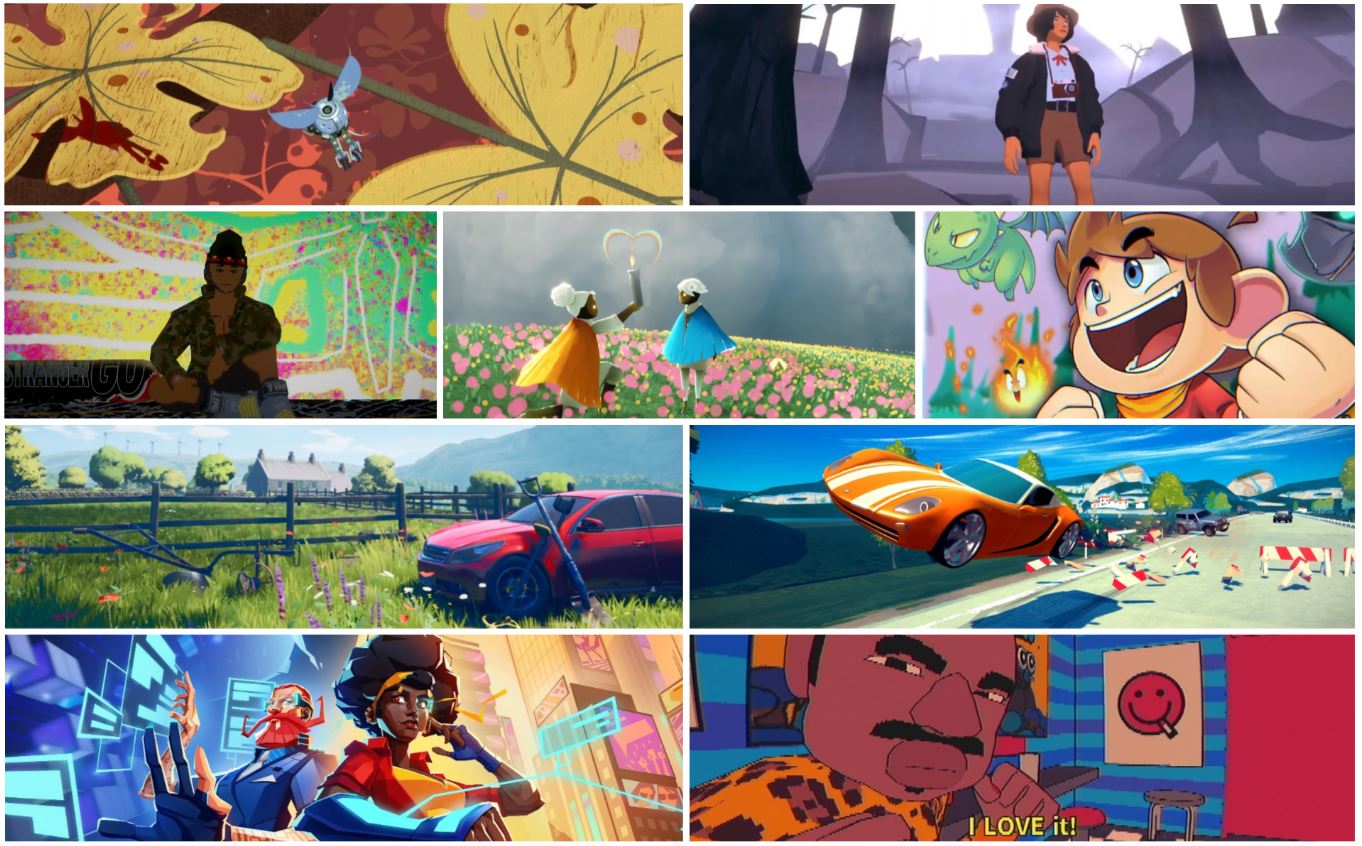Stonefly Review (Xbox One) – With Flying Colours
Stonefly is the new game from Flight School Studio, the award-winning devs who made the crazy pinball action game Creature in the Well a few years back. Welcome to a world where everyone is the size of an insect, and everyone seems to own a functioning mech, a world of pacifist bug-shunting and mech-tinkering. You play as a young pilot and wiz mechanic on a coming-of-age quest, piloting your own bug-mech and using a large array of pacifistic skills to knock a lot of bugs out of a lot of trees. So is Stonefly an essential purchase or one to let pass you by, like a bug on the wind?
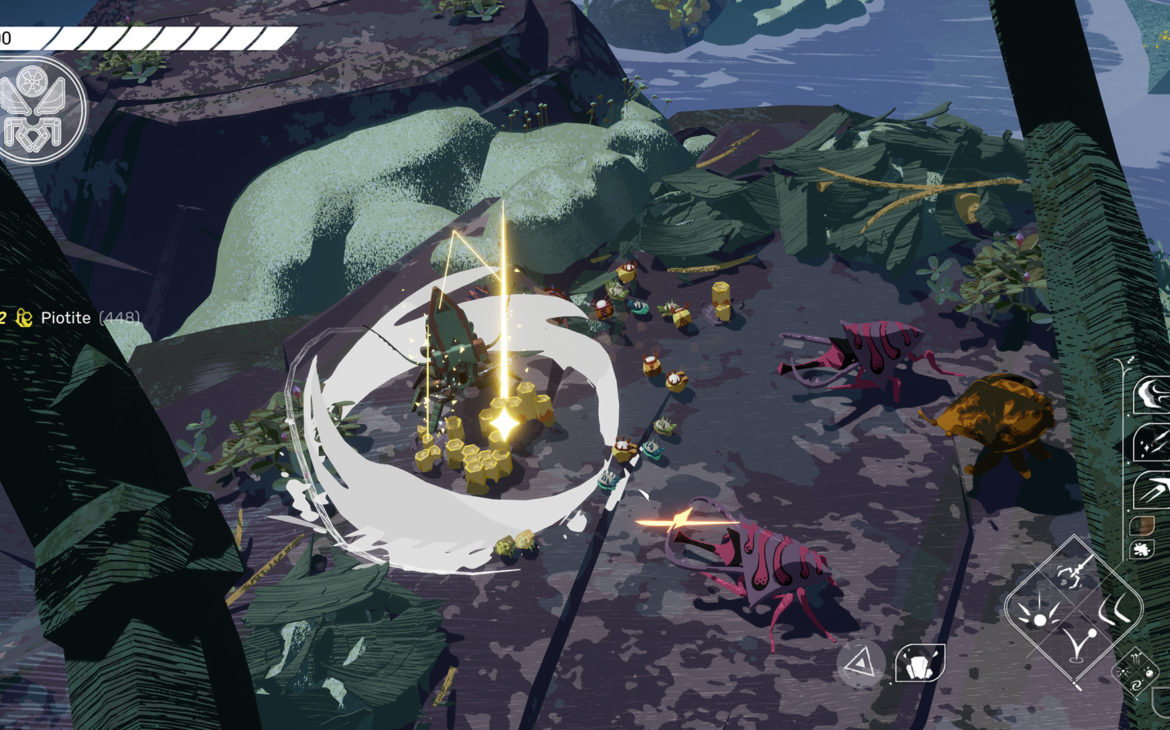
Young mechanic and pilot Annika lives in the rainforest canopy with her father. They are the size of insects. Look, I don’t know why, just go with it. Annika’s father toils day and night on piloted mechs and machines for other people who live in this strange miniature world, and Annika has picked up his skills and knowledge, becoming an ace pilot and very capable mechanic herself. She is plenty headstrong and disobedient too. Their idyllic but mundane life is thrown into disarray one night when Annika takes her father’s most prized mech out for a spin to get supplies – the mech is stolen by a thief and Annika’s father is beside himself. Blaming herself, Annika runs away from home on the back of a cricket, resolving to track down the thief and recover her father’s rig.
On her coming-of-age adventure into the treetops Annika encounters a group of radicals called the Acorn Corps, saves their butts from marauding bugs, and is awarded her own fully customisable rig as thanks. Her journey takes her across the forest canopy, pits her against huge bugs, environmental dangers, trails and tribulations. There’s a clear, if short, arc that will take you some 10 hours or so to play through to completion, and it rarely ever deviates from the main questline. Three distinct forest areas and lots of gathering materials to make necessary upgrades to your mech to reach new areas. I wouldn’t call it a Metroidvania because the actual progress is very linear, even if each area of forest is a maze of branches. Overall it’s a solid story if a little simple, and Annika is a likable protagonist who thinks her way out of problems. However I’d say it lacks a little in terms of explanations and world lore – the story is a canopy, and you never really delve below to the trunks or the roots, to discover why everyone is small, or any larger concerns than Annika’s surface-level journey.
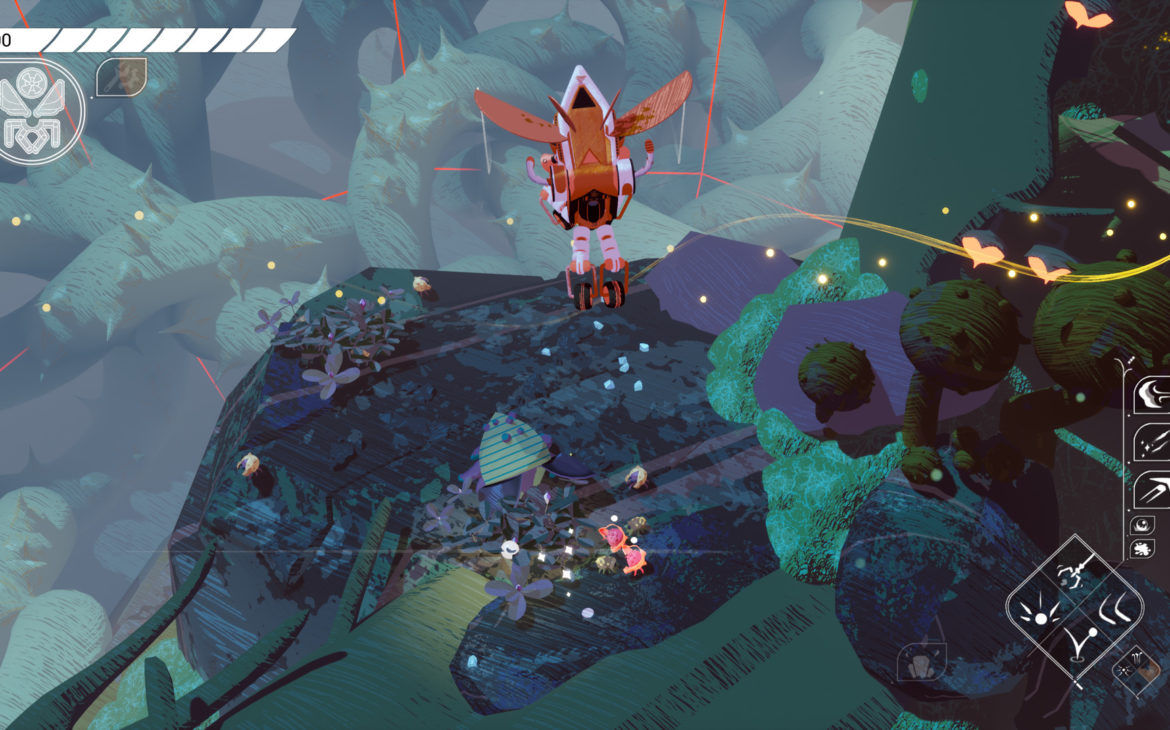
There are three main mechanics that most of the gameplay outside the story falls into; combat with bugs, exploring and gathering materials from the forest, and customising your mech. I mention gathering materials – don’t worry this is not a survival game – but let’s start there. Your mech is kitted out with mineral harvesting capabilities from the off. You explore the forest flying your little mech around, just a little above the branches or leaves. You can follow little Ghost of Tsushima-like wind markers by calling on them with the down arrow. As you explore in search of your latest narrative waypoint, you will find and land near deposits of orange glowing Dinotite, or blue glowing Loranite, and hold the left shoulder button to mine for the minerals.
There are a half dozen or so different types of mineral through the game, and when you have enough of a particular type you can afford to fabricate upgrades and craft parts and skills for your mech. You also pick up a lot of what look like superfluous materials, things that drop off bugs and wouldn’t work on a mech like seed pods and pure water. However these are all clearly marked as sellable items, and can be exchanged for generous amounts of the rarer materials that you need. Minerals and even superfluous items all have meaning and purpose in Stonefly, which is refreshing when so many games are filled chock to the branches with pointless items to collect.
As you encounter blocks in the forest, or as part of the narrative, Annika likes to dream up useful upgrades she can fabricate next time you get to a workshop in camp. You can put a pin in ones you like the sound of and keep them on your own personal wishlist – something that appealed to the listmaker in me. What’s really cool here is that each upgrade she dreams up is based on a kind of EXP system within combat – as you pull off lots of push moves for example, you’ll get upgrades for your wind equipment, if you get damaged a lot, you’ll get offered upgrades in your hull integrity. It’s just a really streamlined and clear system that works in a satisfying manner.
These upgrades can also be cosmetic, and there are plenty of really funky many-legged insect mech designs to mix and match. I found the whole customisation system intuitive and satisfying throughout, and was always pleasantly incentivised to pursue the next upgrade and its necessary mineral requirements.
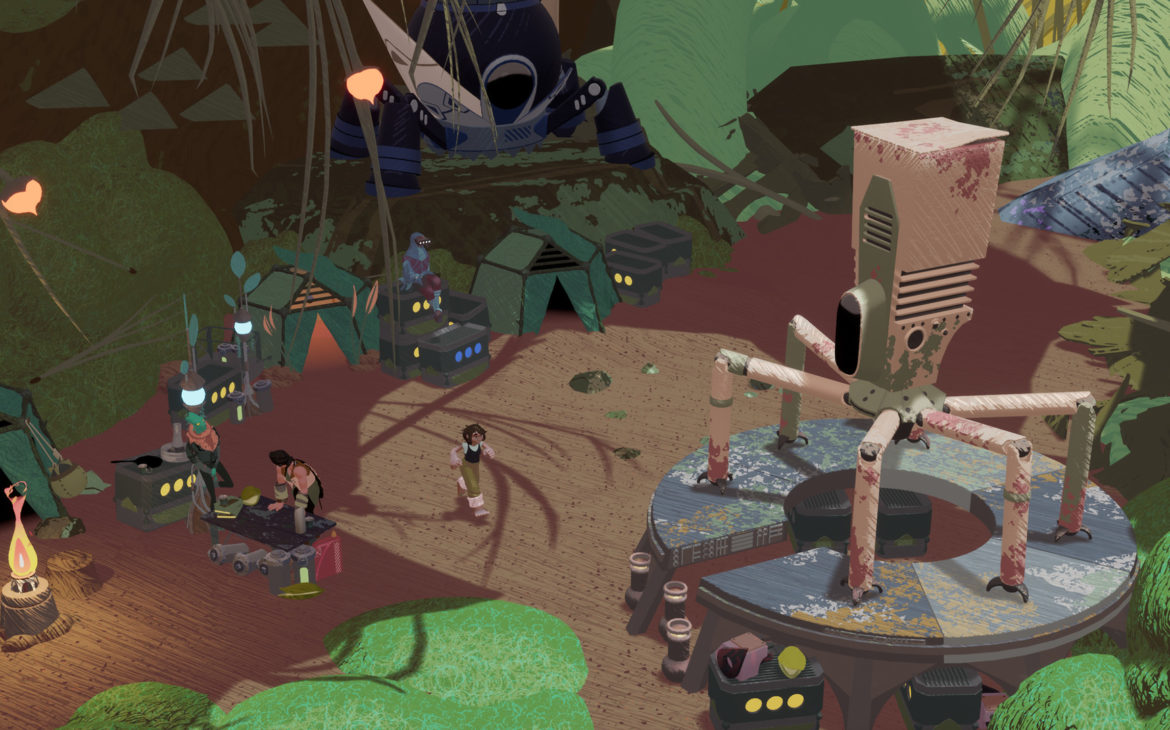
Customisation and gathering is only a means to an end; making your mech constantly more and more capable of dealing with combat. As you explore the branches, huge flat leaves and platforms in the canopy, you will encounter other bugs. Other bugs intent on gathering minerals for themselves, or just looking to eat you.
In Stonefly, combat is refreshingly pacifistic. You don’t have a gun, but you do have an array of abilities and skills all geared around stunning these bugs, and then pushing or blowing them off the side of the leaf or branch you are fighting on. When I was younger I used to change the settings of beat-em-ups like Soul Calibur to infinite-health bouts, so that the challenge became knocking your opponent out of the arena like a sumo match instead of killing or KO’ing them. Stonefly is like a sumo match. Bugs will not die in Stonefly. Never. They will keep getting back up. You have to stun them with your stun pulse, often only at particular moments when they are vulnerable, and then blow them off the leaf as quick as you can while they are still wriggling their legs in the air.
Stonefly is described as chill, but combat can be frantic. Having to go from stunning, to blowing with every enemy, all the while defending the mineral deposits – everything feels like a race against time, because you can’t avoid the bugs well enough to just mine in peace and you can’t spend all your time fighting because while you fight one bug, ten others are depleting the minerals.
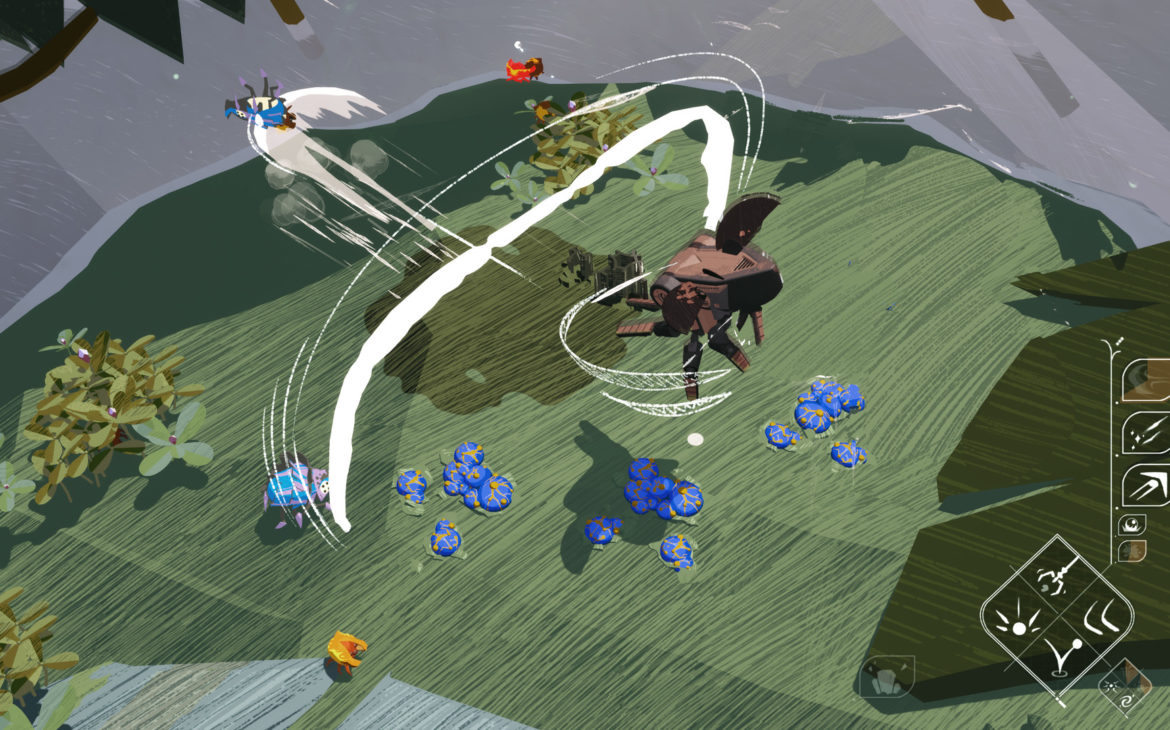
Bugs also hit hard. You are in a mech no bigger than most of the bugs themselves. When they shoot acid cannons at you, or ram into you, or attach to your exoskeleton and try to prize it apart, you can take a lot of damage. You have a repair ability to fix your mech on the wing, and its absolutely essential. It’s also frustratingly easy to fall off the sides of the leaves yourself, especially while fighting, but Stonefly is forgiving in this department, instantly respawning you into the same fight at the same point. The rules that apply to bugs falling off the edge, do not apply to you. And I’m glad they don’t.
If you are damaged to the point you die, rather than get knocked off a leaf, death is not much of an impediment. There’s no real punishment and you keep what you’ve harvested, just starting back at the most recent camp. If you are ever hurting for minerals it’s great to track down one of the big Alpha Aphids (though they are clearly beetles). These huge bugs are the size of trees themselves and their backs form an arena – an arena filled to bursting with minerals. There’s no incentive to fighting the literally dozens of bugs on board – it’s a time limit-based, survival of the fittest, who mines wins. You just have to go all-out mining and running and gliding away and mining some more, and should you die, all that happens is you arrive back at camp.
One issue I did have with combat is that controls are pretty fiddly – probably necessary for all the different systems, but I wonder if there wasn’t a slightly more intuitive way to do it. Or maybe just a couple less features on my mech. Firing downwards, then landing, rotating to push bugs away in a direction that’s useful, all while constantly repairing your rig, dodging missiles and headlong-charging bugs is pretty difficult. There are only so many buttons on a controller, and many did more than one thing in combination with another button. There were upgrades I avoiding purchasing literally because they would add more moves to an already too complex fighting system.
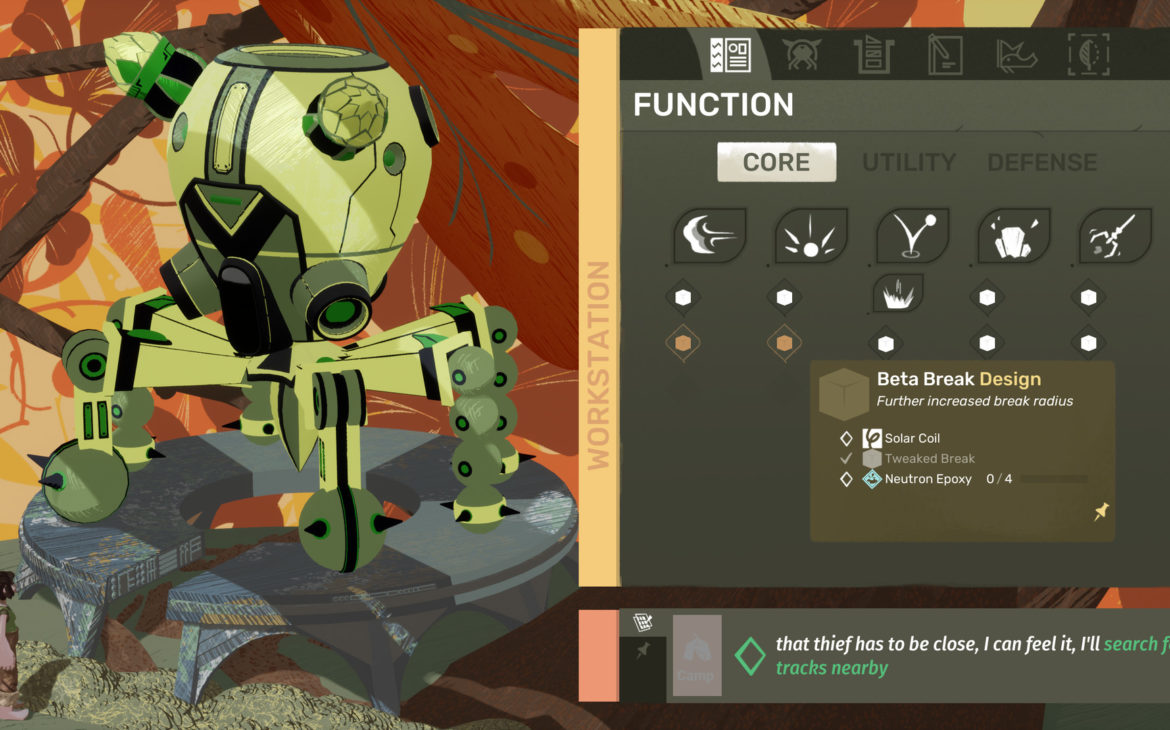
Stonefly has a style all its own, which in the modern gaming world is getting harder and harder to say. It’s close to cel-shading, but with very pastel colours, and a sort of crosshatching ‘drawn’ quality in the shadows. Crayon-scrawled cel-shading is a style I don’t think I’ve ever come across. It’s got a feel of those photoshop effects you try out and then never use, but here someone with far more design sense than me has realised how to make it really pretty. The whole style gives the world, the camps and the canopy, a sort of half-pencils, half plasticine quality, which I really liked.
The character design is also pretty unique, featuring an array of quirky and sort of dumpy characters, especially Annika herself, whose outsized feet and hands are really kind of endearing. They aren’t so dumpy as to look like Podlings or Hobbits, just human but with enlarged and caricatured features. Part of her early quest is on the trail of a cobbler, drawing attention to the fact that everyone has these same outlandish feet.
Stonefly has almost no load times, featuring almost instantaneous respawns, and getting into the action from console load up on the Xbox One took no time at all. However it does have a really annoying rest feature, which also seems to govern auto-saving. You enter camp and go to sleep (sometime this advances the story too), and Annika dreams about bugs and mechs, but that sleep process is played out every time for a good thirty seconds. It gets really annoying, really fast when you just want to get back to the gameplay.
It was rare to find a glitch in Stonefly, but the one I did encounter caused problems – hopefully it’s an easy fix in a quick update post-launch. Finding a checkpoint, or a return to camp point is hard – there is no button to just return to camp. There were plenty of times these checkpoints didn’t work, or didn’t offer me the return-to-camp command. Sometimes you could find the next area, and then not be able to leave the current area at all. In order to solve this getting-stuck-in-an-area issue, I ended up just letting myself get killed; it was easier and less time-consuming.
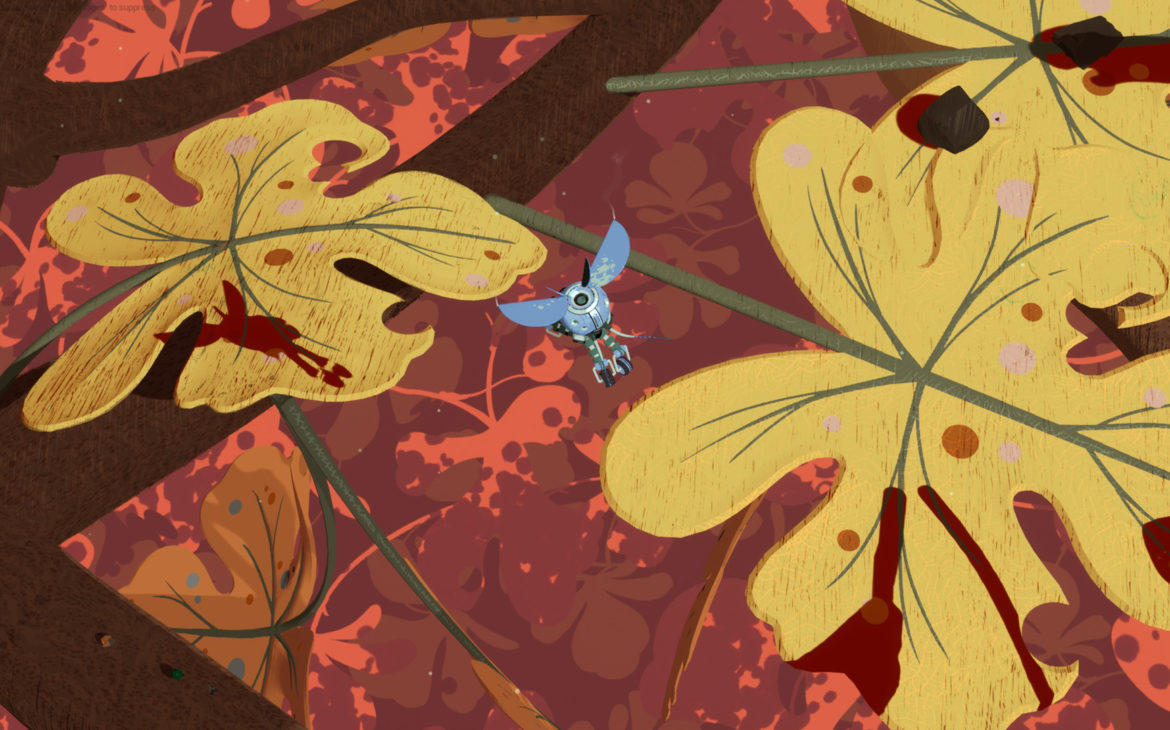
Stonefly employs a great array of really interesting sounds you may never have heard before in its surprisingly intricate chilled soundtrack. There’s some that sound really electronic, while others sound almost samba-esque, full of neat percussion. The composition of the songs is often where they were interesting; almost like the melody is a little bit behind the beat, or just offbeat enough to jar your ear and draw you into a different culture’s music. Somehow it’s crunchy and flat in a way that suits the characters and the world. It’ll be a soundtrack that I listen to long after the game’s short runtime.
Stonefly has a lot going for it. The latest from a clearly talented development team, Stonefly shows intuitive and intricate design in many of its features. A world of tiny humans in the tree-tops, insect-themed mechs and a narrative that draws you nicely through a 10-hour playthrough. I enjoyed Annika’s journey of self-discovery through the forest and her trials to build a mech capable of the trip.
It has a wonderful, satisfying customisation system paired with complementary mineral gathering and an item system where every item has purpose. It has a crunchy and unique soundtrack and pacifistic combat against an array of great bug-types that manages to be frantic and difficult but also great fun. Stonefly is an indie well worth your time.
Stonefly is a strong indie featuring tiny humans in tiny mechs vying with the bugs of the forest canopy for resources. Its tale is enough to drive you through a 10-hour campaign with little embellishment, and its mech-customisation and mineral-gathering systems are satisfying, intuitive, and purposeful. Pacifist bug combat is fast and frenetic, but also plagued with fiddly controls and a few too many abilities to be comfortable.

Stonefly is available on Xbox One (review platform), Xbox Series S|X, PlayStation 4, PlayStation 5, Nintendo Switch and PC via Steam or Epic Game Store.
Developer: Flight School Studios
Publisher: MWM interactive
Disclaimer: In order to complete this review, we were provided with a promotional copy of the game. For our full review policy, please go here.
If you enjoyed this article or any more of our content, please consider our Patreon.
Make sure to follow Finger Guns on our social channels – Twitter, Facebook, Twitch, Spotify or Apple Podcasts – to keep up to date on our news, reviews and features
